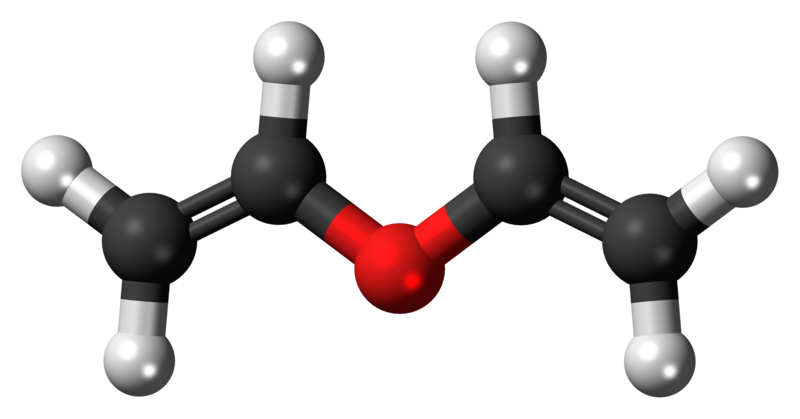Belangrijkste verschil – allylische vs vinylische koolwaterstoffen
Functionele groepen zijn zeer belangrijk bij het begrijpen van de verschillende fysische en chemische eigenschappen van organische moleculen. De termen allyl- en vinylkoolstof geven aan of het koolstofatoom direct of indirect aan een dubbele binding in een molecuul is gebonden. Het belangrijkste verschil tussen allyl- en vinylkoolstof is dat allylkoolstof het koolstofatoom is dat grenst aan het koolstofatoom met de dubbele binding, terwijl het vinylkoolstofatoom een van de twee atomen is die de dubbele binding delen.
CONTENTEN
1. Overzicht en belangrijkste verschillen
2. Wat is AllylKoolstof
3. Wat is VinylKoolstof
4. Vergelijking naast elkaar – AllylKoolstof vs VinylKoolstof in tabelvorm
5. Samenvatting
Wat is allylische koolstof?
Allylische koolstof kan worden omschreven als het koolstofatoom dat grenst aan de dubbele binding. Dit koolstofatoom is het dichtst bij de dubbele binding, maar het maakt geen deel uit van de dubbele binding. Met andere woorden, dit koolstofatoom is gebonden aan een koolstofatoom dat op zijn beurt weer dubbel gebonden is aan een ander koolstofatoom. De koolstofatomen in de dubbele binding zijn sp2 gehybridiseerd. Maar de allylkoolstof is sp3 gehybridiseerd. Het is gebonden aan het sp2 gehybridiseerde koolstofatoom door middel van een enkele binding. De elektronendichtheid rond dit koolstofatoom is lager dan die van koolstofatomen in de dubbele binding. De algemene formule kan worden gegeven als CH3-CH=CH2. Aangezien deze koolstof niet direct aan de dubbele binding gebonden is, wordt hij niet beïnvloed door reacties die op dubbele bindingen optreden, zoals elektrofiele additie. Waterstofatomen die aan deze allylkoolstof gebonden zijn, worden allylkoolwaterstof genoemd. Allylkoolstof kan fungeren als een brug die een koolstofketen en een dubbele binding verbindt. Hier is de C-H binding zwakker dan gewone C-H bindingen. Dat komt omdat de elektronen rond deze koolstof worden verplaatst door de dubbele binding. Deze plaatsen zijn dus zeer reactief.

Figuur 01: Het atoom in rood is een Allylische koolstof.
Wat is Vinylische koolstof?
Vinylische koolstof is een koolstof die betrokken is bij een dubbele binding met een andere koolstof. Het is sp2 gehybridiseerd. Vinylkoolstof maakt een dubbele binding met een andere koolstof die ook sp2 gehybridiseerd is. Beide in deze binding betrokken koolstofatomen zijn vinylic koolstofatomen. De elektronendichtheid rond deze atomen is hoger dan de dichtheid rond allylkoolstofatomen. De algemene formule kan worden gegeven als CH2=CH2.
Vinylic koolstof is een type van alkenyl functionele groep omdat koolstof in alkene functionele groep is. De vinylic groep is afgeleid van het corresponderende alkeen. Daarom wordt deze koolstof ook wel alkenyl koolstof genoemd. Soms kan deze koolstof aan beide zijden via dubbele bindingen aan andere koolstofatomen gebonden zijn. Dan worden alle drie de koolstofatomen vinylic koolstofatomen genoemd. Deze formule kan worden gegeven als, CH2=C=CH2. Since these carbons are directly bonded to the double bond, they undergo the reactions such as electrophilic addition.

Figure 02: Allylic and Vinylic Carbons
What is the difference between Allylic and Vinylic Carbon?
Allylic vs Vinylic Carbon |
|
| Allylic carbon is a carbon atom bonded to a carbon atom that in turn is doubly bonded to another carbon atom. | Vinylic carbon is a carbon that is involved in a double bond with another carbon. |
| Hybridization | |
| Carbon atom in an allylic group is sp3 hybridized. | Vinylic carbon is sp2 hybridized. |
| Bond Length | |
| C-H bond length in allylic carbon is higher. | Vinylic C=H bond is lower. |
| Bond Type | |
| Allylic carbon only forms a single bond. | Vinylic carbon can have either two double bonds in its sides or one double bond. It forms at least one double bond. |
| Number of Hydrogen Atoms | |
| Allylic carbon can have a maximum of 3 hydrogen atoms. | Vinylic carbon can have only two carbon as the maximum number. |
| Carbon Atom and Double Bond | |
| Allylic carbon act as a bridge to combine the double bond with the rest of the molecule. | Vinylic carbon makes the double bond. |
Summary – Allylic vs Vinylic Carbon
The difference between Allylic and Vinylic carbon depends on whether the carbon atom is bonded directly or indirectly to a double bond. Allylic carbon indirectly relates to a double bond whereas vinylic carbon is directly involved in a double bond. Een ander belangrijk verschil tussen allylische en vinylische koolstof is dat allylische koolstof sp3 gehybridiseerd is terwijl vinylische koolstof sp2 gehybridiseerd is.